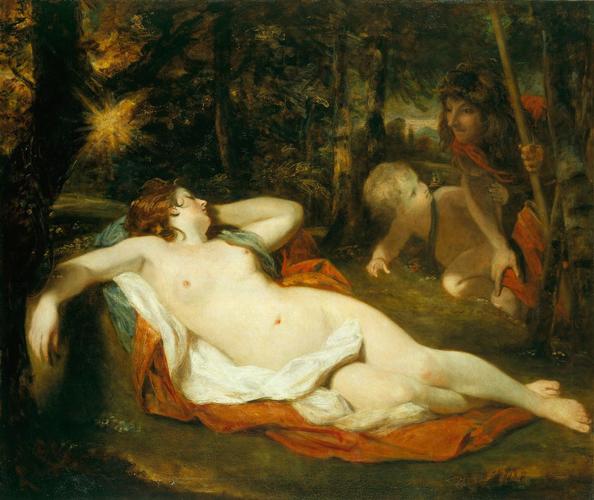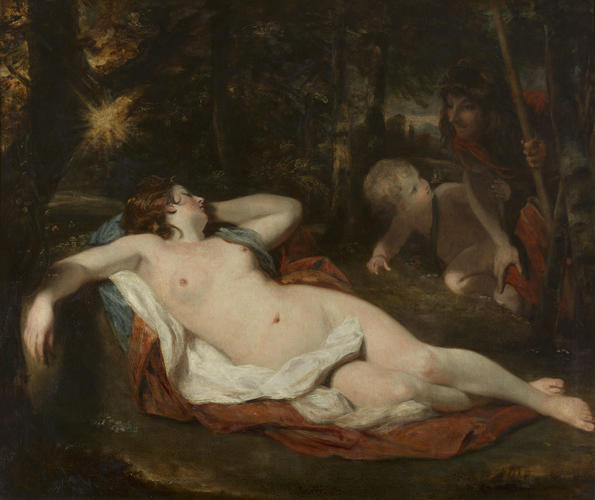-
1 of 253523 objects
Cymon and Iphigenia c.1775-89
Oil on canvas | 143.2 x 171.6 cm (support, canvas/panel/stretcher external) | RCIN 404695
-
When George III was asked by Lord Eglinton to sit for the most fashionable portrait painter of the day, Joshua Reynolds, he replied: ‘Mr Ramsay is my painter, my Lord.’ Reynolds tried to gain royal notice with two speculative ventures – a portrait of George III as Prince of Wales (OM 1011, 401034) and an oil sketch for a depiction of his marriage to Queen Charlotte (OM 1012, 404353) – both of which remained on his hands. Reynolds was knighted by George III, made first president of the Royal Academy and Principal Painter to the King upon Ramsay’s death in 1784, but never asked to paint anything. That the Royal Collection has a fine group of Reynolds is entirely thanks to George IV, who commissioned portraits at the end of the artist’s life and acquired many examples of his earlier work. This is one of a group of highly personal works (OM 1008, 400699, OM 1011, 401034, OM 1029-31, 404695-6 and 405712) obtained by him at various times from Reynolds’s niece and heiress, Mary Palmer, Marchioness of Thomond (1750-1820). This one was donated by her in 1814.
Cymon and Iphigenia is an important history painting dating from Reynolds’s final years. It was exhibited at the Royal Academy in 1789 and was therefore one of his last works. It was engraved on three occasions and an enamel copy was made by Henry Bone for George IV. A smaller, unfinished copy by William Etty is in York City Art Gallery.
The subject is taken from Giovanni Boccaccio’s fourteenth-century collection of stories, the Decameron. Cymon was the oaffish son of a Cyprian noble who was confined by his father to his country estates. While out wandering on the estate one summer afternoon, he came upon Iphigenia asleep by a fountain and was instantly struck by her beauty. The love thus kindled had the power to transform Cymon from country bumpkin to elegant courtier and enabled him to win Iphigenia’s hand in marriage.
The figure of Iphigenia is inspired by the Venetian tradition of the female nude; in particular the works of Titian, such as the Venus of Urbino (Uffizi, Florence) and the Venus del Pardo (Louvre, Paris). Reynolds also shows an awareness of the paintings of Correggio.
William Seguier, the Surveyor of the Queen’s Pictures refused to clean the painting when it entered the Collection on the grounds ‘that in attempting to remove [the dirt] we should destroy some of the beautiful glazings’. Nonetheless, Cymon and Iphigenia is a supreme example of Reynolds’s powers of composition.Provenance
Bequeathed by Reynolds to his niece, the Marchioness of Thomond, and presented by her to George IV in 1814; recorded in store at Carlton House in 1819 (no 220); in the Picture Gallery at Buckingham Palace in 1841 (no 18)
-
Creator(s)
Acquirer(s)
-
Medium and techniques
Oil on canvas
Measurements
143.2 x 171.6 cm (support, canvas/panel/stretcher external)
176.8 x 204.6 x 7.5 cm (frame, external)
Category
Object type(s)

